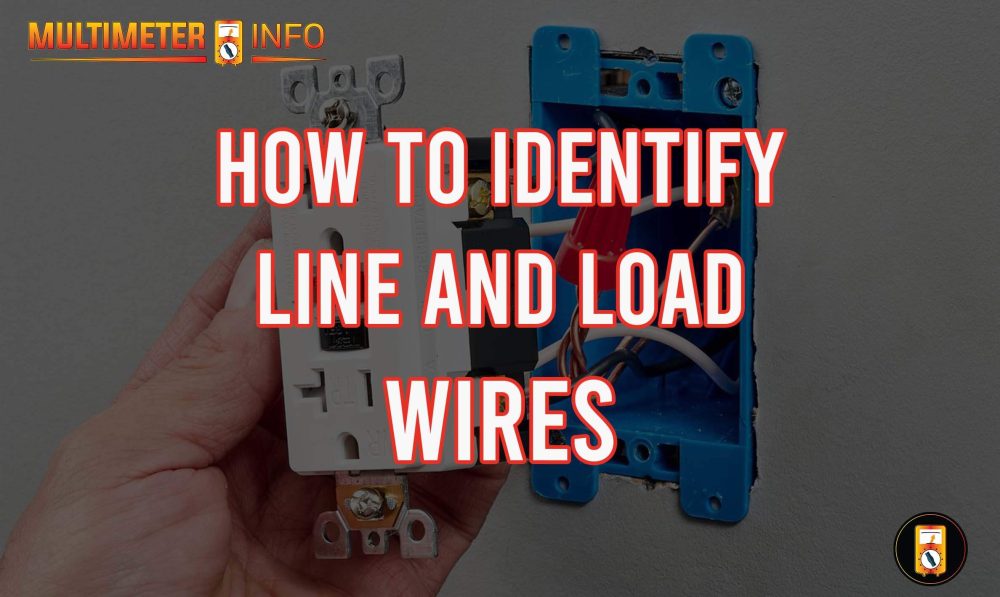Do you want to learn the difference between line and load wires? It can be difficult to tell the difference between the two because they appear similar in many cases. On the other hand, knowing the difference is essential for various electrical projects; failing to do so could result in serious problems. This blog post will teach you everything you need to know to understand and recognize these terms in any electrical system. We’ll also show you how to work safely around high-voltage power lines. Continue reading to find out how to tell your lines from your loads!

What are line and load wires?
Line wires, such as a breaker panel, deliver electricity to the source. Load wires are then connected to the line wire and distribute the electricity through outlets, switches, lights, and other electrical equipment. It must be installed according to safety regulations to ensure proper power distribution without accidentally overloading circuits.
Additionally, both types of wiring must be properly insulated and sealed with the proper seals and connectors for safe wiring practices. Using these techniques, you can ensure your home or office stays safe from electrical shock or fire hazards due to improper wiring.
How To Identify Line And Load Wires:
You will need to use a multimeter to identify your line and load wires. Start by setting the multimeter to “Voltage (AC)”:
Using Multimeter:
- Plug your black negative multimeter probe into the “COM” port and plug your red positive probe into the “VΩmA” port.
- Select the “200 AC Voltage” range which is represented by “VAC” or “V~” on the multimeter.
- Touch one of the wires with both probes – you should get a 120v reading on one of them (this will be your line wire) and no reading for the other – this is your load wire.
- Repeat this process for each pair of wires to identify all line and load wires in your application.
- Once you are done, replace all probes back onto their designated ports, and switch off the multimeter.
Using a multimeter, you can quickly identify your line and load wires for any application. Ensure that you follow safety procedures when working with electrical tools and components. If there is any doubt about the wiring, always consult a qualified electrician.
Using Non-Contact Voltage Tester:
Identifying line and load wires using a non-contact voltage tester is a simple and safe way to ensure your electrical system is functioning correctly. To complete this task, you will need a non-contact voltage tester; the device should have three different light indicators; red, yellow and green.
- Turn off the power to the electrical system as a safety precaution before beginning.
- Identify which wires are line and load; typically, the white wire is neutral, black or red is hot (line), and green or bare copper is ground (load).
- Hold the non-contact voltage tester near each wire; the LED light should indicate if there is a live current running through it.
- Red will indicate an active voltage present; this would be a line wire.
- Yellow indicates there may be low levels of electricity, indicating a neutral.
- Green would mean there’s no electricity at all – this is load/ground wire.
Always practice safety with electricity, and never touch wires with your bare hands. Following these steps, you should be able to quickly identify line and load wires using a non-contact voltage tester, ensuring that your electrical system is safe and functioning correctly.
Frequently Asked Questions:
Line wires are the cables or conductors that bring electricity from a power source to an electrical device. In contrast, load wires are conductors that carry electricity away from the device to complete the circuit. The main difference between these two types of wire is their function and how they interact with other components in an electrical system.
Generally speaking, line wires have a higher voltage than load wires. In addition, line wires should never be connected directly to a device, whereas load wires should be connected directly. You can also distinguish between them by looking at the colour coding—the hot or live wire will usually be coloured red, while the neutral wire is usually white.
Line wires can power large appliances such as air conditioners, refrigerators, water heaters and dryers. Load wires are typically used in lighting circuits or to supply power to smaller devices like outlets, switches and thermostats. Both types of wiring may also be used in home automation systems or other specialized applications.
Safety is always a priority when dealing with electrical wiring. Ensure you turn off the power to the circuit before beginning any work and use protective gear such as insulated gloves or face shields. If you are uncertain how to identify or connect any of the components in an electrical system, hire a professional electrician for assistance.
Final Note:
It is critical to take all necessary precautions when working with electrical wiring. Always use insulated tools and test for voltage before beginning any wire manipulation project. Also, if you are unsure how to identify line and load wires, an experienced electrician can help. By taking these precautions and adhering to the guidelines outlined here, you can ensure a safe and successful experience working with electricity.




